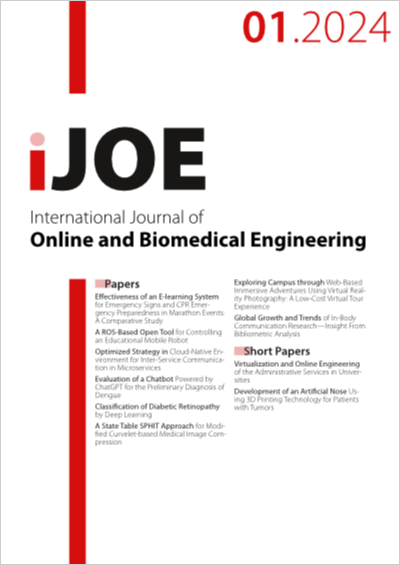Classification of Diabetic Retinopathy by Deep Learning
DOI:
https://doi.org/10.3991/ijoe.v20i01.45247Keywords:
diabetic retinopathy, deep learning, classification, ResNet101, DenseNet121, EfficientNetB0, InceptionResNetV2Abstract
Diabetic retinopathy (DR), which is a leading cause of adult blindness, primarily affects individuals with diabetes. The manual diagnosis of DR, with the assistance of an ophthalmologist, has proven to be a time-consuming and challenging process. Late detection of DR is a significant factor contributing to the progression of the disease. To address this issue, the present study utilizes deep learning (DL) and transfer learning algorithms to analyze different stages of DR and precisely detect the condition. Using a large dataset comprising approximately 60,000 images, this study employs ResNet-101, DenseNet121, InceptionResNetV2, and EfficientNetB0 DL models to automatically assess the progression of DR. Images of patients’ eyes are inputted into the models, and the DL architectures are adapted to extract relevant features from the eye images. The study’s findings demonstrate that DenseNet121 outperforms ResNet-101, InceptionResNetV2, and EfficientNetB0 in accurately classifying the five stages of DR. The accuracy of the models was 97%, 96%, 95%, and 94%, respectively. These results underscore the effectiveness of DL in achieving an accurate and comprehensive classification of retinitis pigmentosa. By enabling accurate and timely diagnosis of DR, the application of DL techniques significantly contributes to the field of ophthalmology, facilitating improved treatment decisions for patients.
Downloads
Published
How to Cite
Issue
Section
License
Copyright (c) 2023 HatoOn, Roaa Al-ahmadi, Lobna Hsairi

This work is licensed under a Creative Commons Attribution 4.0 International License.



